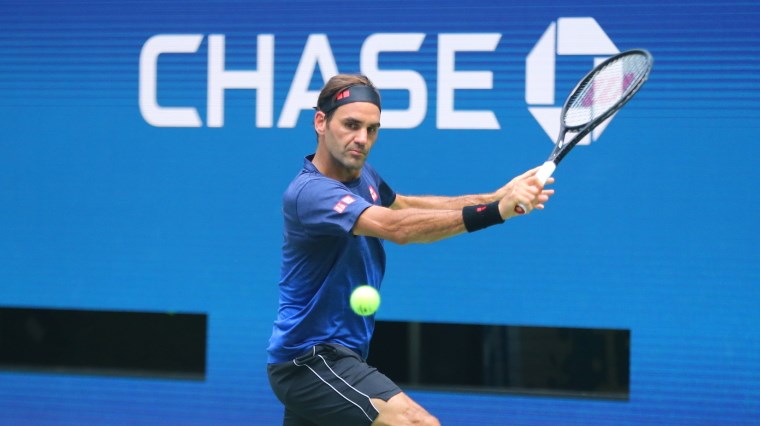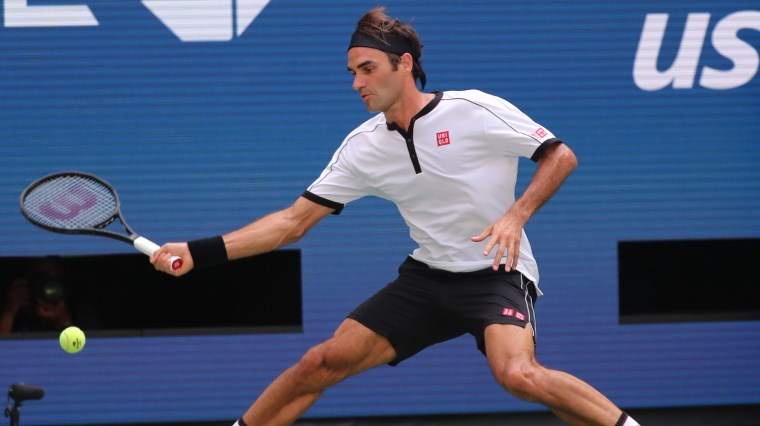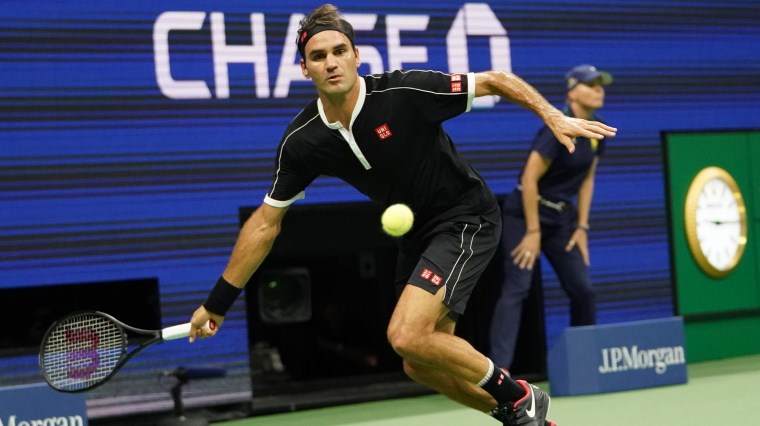How To Keep Tennis-Fit In Your 30s & 40s Like Roger Federer

“There is no way around hard work. Embrace it.” – Roger Federer
With tennis icon and 20-time Grand Slam champion Roger Federer having just celebrated his 40th birthday and proving that we don’t have to be confined by age, many tennis enthusiasts are asking what’s the secret to staying tennis-fit?
At an elite level, tennis generally doesn’t favour 'veteran’ competitors with 27 years old being the average retirement age for professional players. In saying that, tennis is an excellent sport to progress with as you age at a recreational or club level, or even to play for the first time in your 30s and 40s to maintain your physical fitness.
As we age our flexibility, muscle strength and stamina naturally decline, and we need to make deliberate effort to maintain them. With inspiration from the Swiss legend Roger Federer's diet, training plan and recovery routine as well as his attitude over the years, you can shake off the rust to get back into your sport or prepare your body to keep your tennis passion running strong for the future.
Diet
“Two hours before every match, I eat pasta with light sauce… I have been doing it for 20 years.” – Roger Federer
Your sports nutrition
It’s important to consider your sports nutrition on and off the court and how this impacts your performance and focus. Food is your body’s fuel. A wholesome, balanced diet including energy-rich complex carbs, lean protein for muscle growth and repair, and fruits and vegetables for vitamins and minerals improves your overall and athletic fitness.
Don’t copy Roger to a T
It’s no secret that Roger Federer has a sweet tooth – with waffles, chocolate and ice cream on the menu. However, he is known for having a varied diet and by being physically active at an elite level, seemingly no amount of carbs or high-fat dairy can weigh him down. In this case, it’s about considering your lifestyle as a whole with the help of your tennis coach or dietitian, rather than copying Roger's approach too closely.
Pre-match meal
Pre-match it’s important to top up your glycogen (energy) levels with a meal high in carbohydrates and ideally with a portion of lean protein. In Roger’s case pasta has been his go-to pre-match meal for 20 years running, but it’s important to find what works for you and not change things too drastically in terms of your diet before a big match.
Mid-match snack
On the court take advantage of the break intervals during a tennis match to rehydrate and refuel. It’s almost an iconic image – Roger Federer enjoying a banana during a changeover. Jam-packed of carbohydrates and potassium, bananas provide a valuable source of fast-acting energy and are easy to eat quickly to help sharpen your concentration.
Hydration
At a professional level the duration of a tennis match can be longer than 3 hours. It’s not surprising that this consistent and intense physical activity can drain your stamina and cause significant water loss through sweat, particularly during warm weather. Hydration first and foremost is essential pre, during and post-match to minimise the risk of muscle cramps, ward off mental fatigue and keep your reaction times sharp.
Training On & Off The Court

“It’s not only important to move fast. You have to move right, and with the nature of the sport, you have to move fast and right for a long time in a match.” - Pierre Paganini, Roger Federer’s fitness coach
A training plan on and off the court is vital for improving your strength, endurance, mobility and agility. The athletic fitness developed during cross-training will naturally transfer to your performance on the court – giving you an edge above the competition and keeping you tennis-fit for the future.
Diversity is key to ensure all muscles get a workout without being overworked. Roger Federer frequently uses fitness equipment in his routine – jump ropes, resistance bands and medicine balls – to get the most out of his training.
Warm-up
Exercises that train for tennis-specific movement of the lower body like butt kicks to build leg strength and swift side-to-side shuffles from one side of the court to the other are among the go-to warm-up exercises for Roger Federer.
Jump rope sessions where he gradually increases the pace until he has doubled the speed to improve stamina, cardiovascular fitness, blood circulation, calf muscle strength and footwork speed are also included in his warm-up routine.
Weight training
In the off-season, Roger Federer is at home in the weight training room with dumbbell exercises (e.g. bicep curls, tricep curls), squats, leg presses and bench presses helping him build body strength and muscle power.
Other equipment-based workouts
Roger Federer's training includes medicine ball tosses, shuffles and lunges to increase upper body and core strength. Cone drills where he zigzags between cones while working on his backhands and forehands improve agility, coordination and footwork.
Balancing on one leg on a mini trampoline while hitting volleys is another of his signature workouts to improve balance, reflexes and hand-eye coordination.
To increase the intensity of his on-court training, he'll wrap a resistance band around his legs – strengthening the lower body muscles to stay primed for an elite level of play.
HIIT
Roger Federer prefers HIIT sessions over endurance training – that is, high intensity interval training that involves short but explosive bursts of movement, a short rest period and then back to high intensity to quickly work up a sweat.
Pilates
In comparing Roger Federer to other players his quality of movement is frequently highlighted – being smooth, controlled and light on his joints. Enjoying Pilates throughout his ongoing career is likely to have had a role in that.
Pilates helps build core strength, improves your postural alignment and encourages mindfulness in movement. It helps tennis players train for flexibility and stability, particularly of the shoulder joint to translate to less risk of injury and more energy-efficient muscle movement.
Recovery & Rehabilitation
“I'm still doing the things like I used to: trying to sleep enough, take a massage and a stretch… that's it really. Do that for as much as I can to get ready.” – Roger Federer
The importance of recovery is commonly overlooked and yet it is critical in your overall health and performance. However, it doesn’t have to be complicated and Roger himself isn’t a fan of the more ‘out there’ or ‘trendy’ methods of recovery like ice baths.
Sleep quality and duration
Roger Federer aims for at least 10 hours sleep per night and up to 12 hours if you include his 2-hour afternoon nap. This amount of sleep may seem overkill or unobtainable for most of us, but it is common for elite athletes.
Sleep is your body in repair mode – speeding up the repair of muscle tissue that has experienced wear and tear during athletic performance, reducing inflammation and ensuring you're less injury-prone during activity.
The quality of sleep is also important – high quality sleep will keep you refreshed and focussed on match day and many athletes wear a sleep tracker to help determine sleep quality.
Stretch and massage
Roger Federer is pro-active about his recovery by stretching to elongate and increase the flexibility of muscles, to move more efficiently and reduce risk of injury. By increasing circulation, stretching boosts the transport of oxygen-rich blood to your muscles – to both perform better and recover faster.
Traditional methods of relaxation and recovery like massage help release tension and tightness of muscle knots. Fascia training or foam rolling is commonly used by tennis players as a self-massage to prime their body for activity or as a rehabilitation tool. You can see our Foam Rolling Tips by Physiotherapist Max Duncan to learn how to use a foam roller safely and effectively.
Listen to your body
Listening to your body is essential to improve your longevity as an athlete. Roger Federer knows when to prioritise his rehabilitation – having withdrawn from the 2021 Tokyo Olympics due to a knee injury during the grasscourt season and its continuing complications post two surgeries in 2020.
With a willingness to reassess his goals and “regroup”, to respect his body and know when to reign it in, he’s helping keep his future as a tennis player secure and setting himself up to make a comeback – potentially in the 2021 US Open in New York.
Attitude

“You actually have to take it one point at a time. It sounds crazy, but it’s like little by little you get to the finish line.” – Roger Federer
It’s no secret that we can attribute a mountain of inspirational quotes to Roger Federer which have given us insight into the tennis legend’s mindset over the years. What stands out is his ability to live in the moment and focus on the task (or very literally, the point) at hand as well as his determination to continuously improve despite setbacks and adversity – whether it be injury or losses.
“At the end of the day, you just have to try your best and have no regrets. It felt like, when I was young I had too many regrets, and that was terrible for me. I was too crazy back in those days.”
His age and experience has improved his adaptability mentally, his ability to move forward from defeat and his understanding of his own emotions, while his self-drive keeps him pushing to get more out of himself, even when he obviously has nothing to prove after a vibrant history on the court.
And let’s not forget his positivity…
“I’m a very positive thinker, and I think that is what helps me the most in difficult moments.”
… and last but not least, his passion.
“When you do something best in life, you don’t really want to give it up.”
Happy 40th Birthday Roger!
